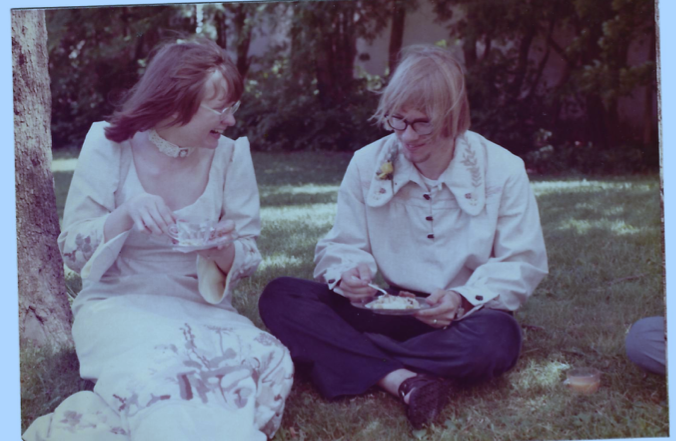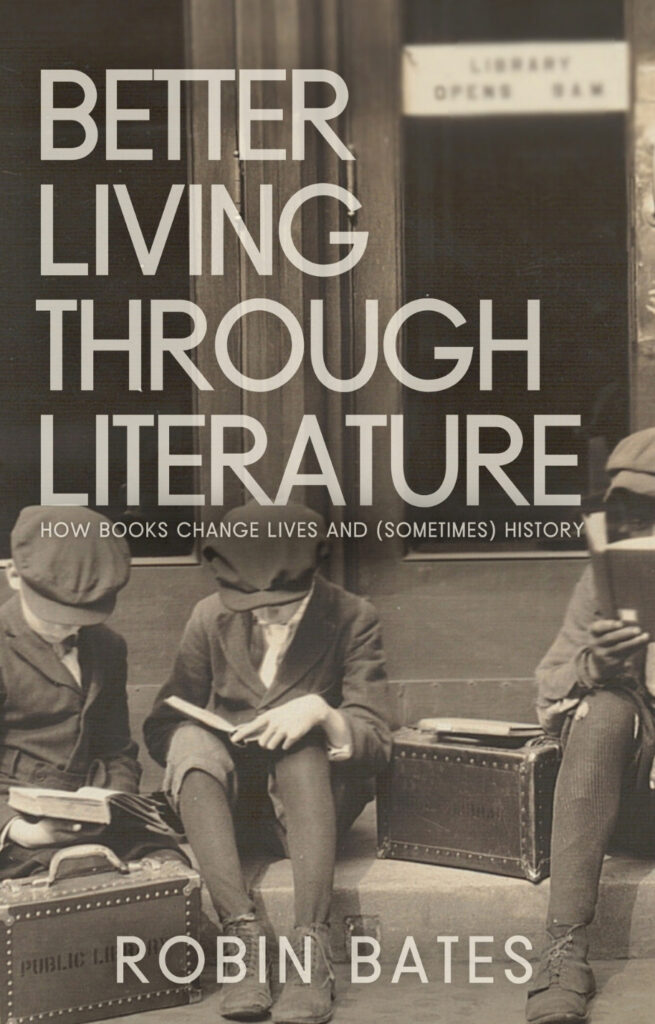Note: If you wish to receive, via e-mail, (1) my weekly newsletter or (2) daily copies of these posts, notify me at rrbates1951@gmail.com and indicate which you would like. I promise not to share your e-mail address with anyone. To unsubscribe, send me a follow-up email.
Thursday
Today is our 50th wedding anniversary. On June 8, 1973, Julia and I got married following Carleton College’s commencement.
It was a very busy day as my roommate and one of Julia’s close friends got married before commencement (they provided breakfast). That was followed by my induction into Phi Beta Kappa, then commencement, and then we provided lunch prior to the wedding. I’m not sure what we were thinking.
In today’s blog I share the wedding ceremony that we composed earlier in the week, along with some context.
To set the scene, Julia wore a long cotton dress embroidered with mushrooms (a reference to nature, not to drugs) and I wore an embroidered peasant shirt (also of cotton), along with blue jeans and sandals. Julia’s mother and sister had made both. The marriage took place in an open green space that was adjacent to Carleton’s Japanese garden.
As you read the ceremony, you might keep in mind that I felt somewhat defensive about getting married, given that my advisor was an old Marxist historian (Carl Weiner) that I thought might disapprove. After all, many of us in those days thought of marriage as a “bourgeois institution.” Thus, the ceremony was in part my explanation–to him, to the world, and most of all to myself–about why it was okay that we were having a wedding at all.
We opened with the hymn “Morning Has Broken,” more because it was in the Moravian hymnal (Julia was a Moravian at that time and her Moravian minister married us) than because it had been recently popularized by Cat Stevens. Our parents were then asked for, and gave, their permission (it seemed important to us to have everyone on board), after which we had a classmate and a poetry professor (Keith Harrison) read erotic poems.
The first was a passage from Song of Songs (2:1-16), one very much in the spirit of the hymn. The passage includes the lines,
My beloved spake, and said unto me,
Rise up, my love, my fair one, and come away.
For, lo, the winter is past, the rain is over and gone;
The flowers appear on the earth;
the time of the singing of birds is come,
and the voice of the turtle is heard in our land.
The second poem raised a few more eyebrows as it featured copulating turtles. I had fallen in love with the poetry of D.H. Lawrence my senior year, which spoke to our sexual awakening. “Tortoise Shout” captured my amazement at how I was casting off solitude and throwing myself into a primal relationship with another human being. The poem concludes with these lines:
Sex, which breaks up our integrity, our single inviolability, our deep silence
Tearing a cry from us.
Sex, which breaks us into voice, sets us calling across the deeps,
calling, calling for the complement,
Singing, and calling, and singing again, being answered, having found.
Torn, to become whole again, after long seeking for what is lost,
The same cry from the tortoise as from Christ, the Osiris-cry of abandonment,
That which is whole, torn asunder,
That which is in part, finding its whole again throughout the universe.
As I say, copulating turtles is not a normal wedding theme. Perhaps part of me wanted to shock, and perhaps partly I was using the poem to prove I was not bourgeois after all. But I think the deepest reason for its selection was to tap into something deeper than ourselves. As I was not particularly religious, I needed a way to articulate the mysterious currents that I sensed were at work.
Next came my “defense of marriage,” which I set up as an interchange between the minister (Erwin Boettcher) and the congregation. I quoted two poems in the process, Archibald MacLeish’s “Ars Poetica” and W.B. Yeats’s “A Prayer for My Daughter.”
In the first MacLeish, arguing for images over expository prose and asserting that “a poem should not mean but be,” says that love can be conveyed by “the leaning grasses and two lights above the sea.”
Meanwhile Yeats, whom I had encountered in an Irish Renaissance class, taught me the significance of ritual and ceremony. Which is to say, he provided me with a reason why Julia and I should get married rather than just shack up together. Praying for his infant daughter, in the last stanza he imagines her husband bringing her to a house
Where all’s accustomed, ceremonious;
For arrogance and hatred are the wares
Peddled in the thoroughfares.
How but in custom and in ceremony
Are innocence and beauty born?
Ceremony’s a name for the rich horn,
And custom for the spreading laurel tree.
I’ll also note that my articulation of the tension between self and couple probably owes a lot to Lawrence, especially his Studies in Classic American Literature (although the tension also shows up in much of his poetry). There’s also a Marxist dialectic at work. Anyway, here’s the argument for marriage that I set forth:
Minister: The marriage bond is a bond between two individuals. It does not entail a merging of one into the other, for in merging the individuality is lost.
Congregation: There must be a tension of difference. Without the tension, there can be no growth.
Minister: From the tension, this man and this woman will grow to new awarenesses and reach new syntheses. Marriage can be beautiful because it provides a unified form in which to search.
Congregation: Marriage is like a sonnet. As a fixed form, it endows a heightened beauty on the infinite number of variations within.
Minister: The bond is the attraction between two stars revolving around each other, caught in each other’s orbit but resisting an incorporation which would burn brightly but die quickly.
Congregation: “Love is the leaning grasses and two lights above the sea.”
Minister: If we are gathered together today, it is because through ritual we ascertain the symbolic nature of the bond. And only through symbolism can we touch upon the beauty and the innocence.
Congregation: “How but in custom and in ceremony
Are innocence and beauty born?
Ceremony’s a name for the rich horn,
And custom for the spreading laurel tree.”
This interchange was followed by “Tomorrow Shall Be My Dancing Day,” a traditional English carol and the minister’s admonition. Then he said (this also was our wording),
You are gathered here because the bond to be made is not only between Julia and Robin. It is also between them and you, who are representative of the larger community. Are you willing to accept in that community a new member?
Congregation: We are. (or We aren’t.)
I felt I needed to give the congregation a choice (thus the “we aren’t”), and in fact my contrarian mentor told everyone afterwards that he opted for the latter choice. I don’t know if he was joking.
We then went on to exchange vows and rings, after which a classmate played Vaughan Williams’s “The Call” on a lute and we were presented to the community.
Looking back on this, I see myself turning to poetry in an attempt to make sense of this big life step that we were making. Since, unlike Julia, I was not part of a rich religious tradition—her ancestors had been Moravian missionaries—I needed to search elsewhere for spiritual grounding, and poetry provided it. (Her religious upbringing also explains why she gave me a freehand in composing the ceremony. She realized I needed an explanation more than she did.)
I wouldn’t include Lawrence if I were to do it over again, but then, I was 21 at the time. On the other hand, I’m struck that we got right the part about two people supporting each other in their own individual growth.
Fifty years later, we’re still holding to that commitment.


